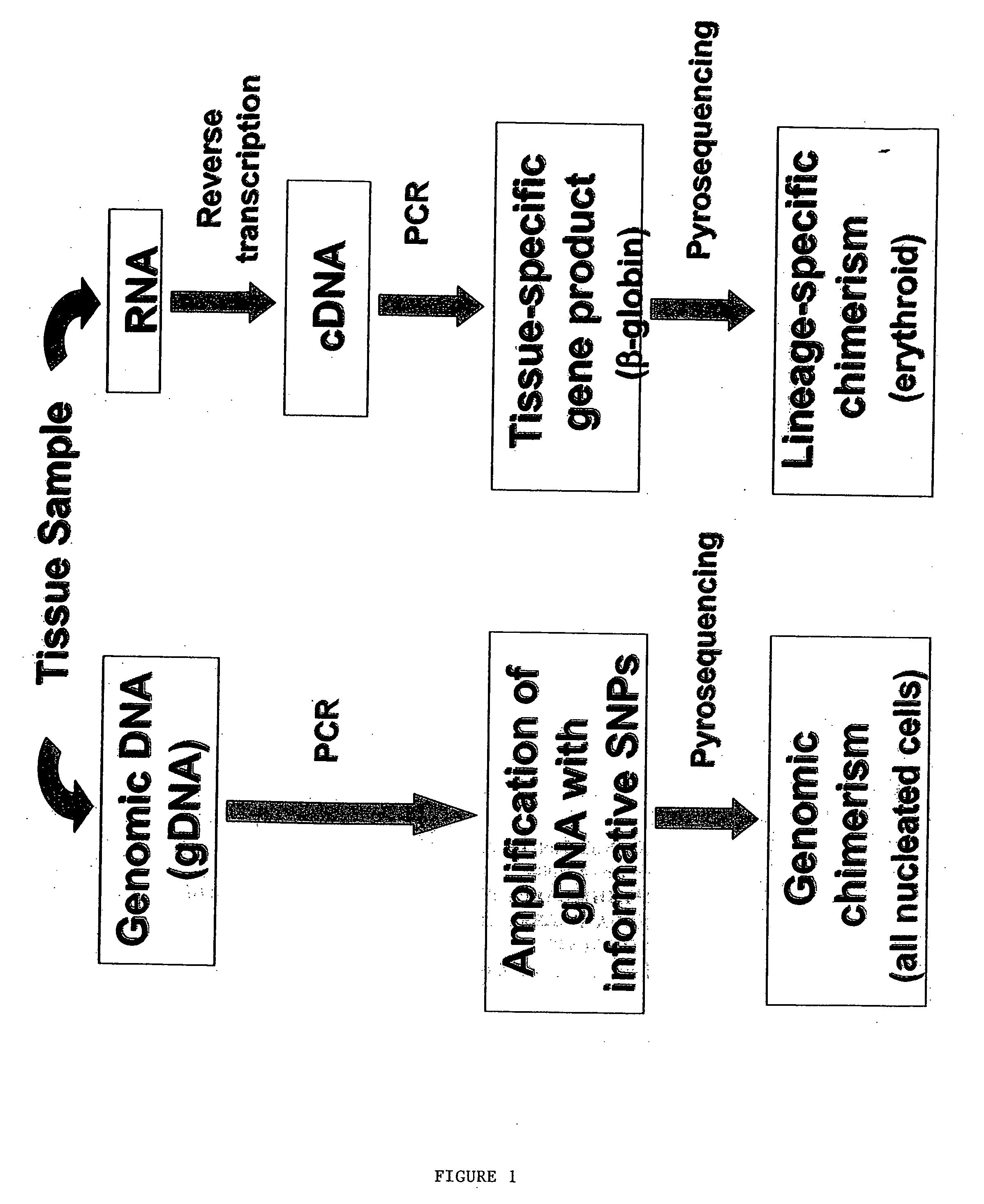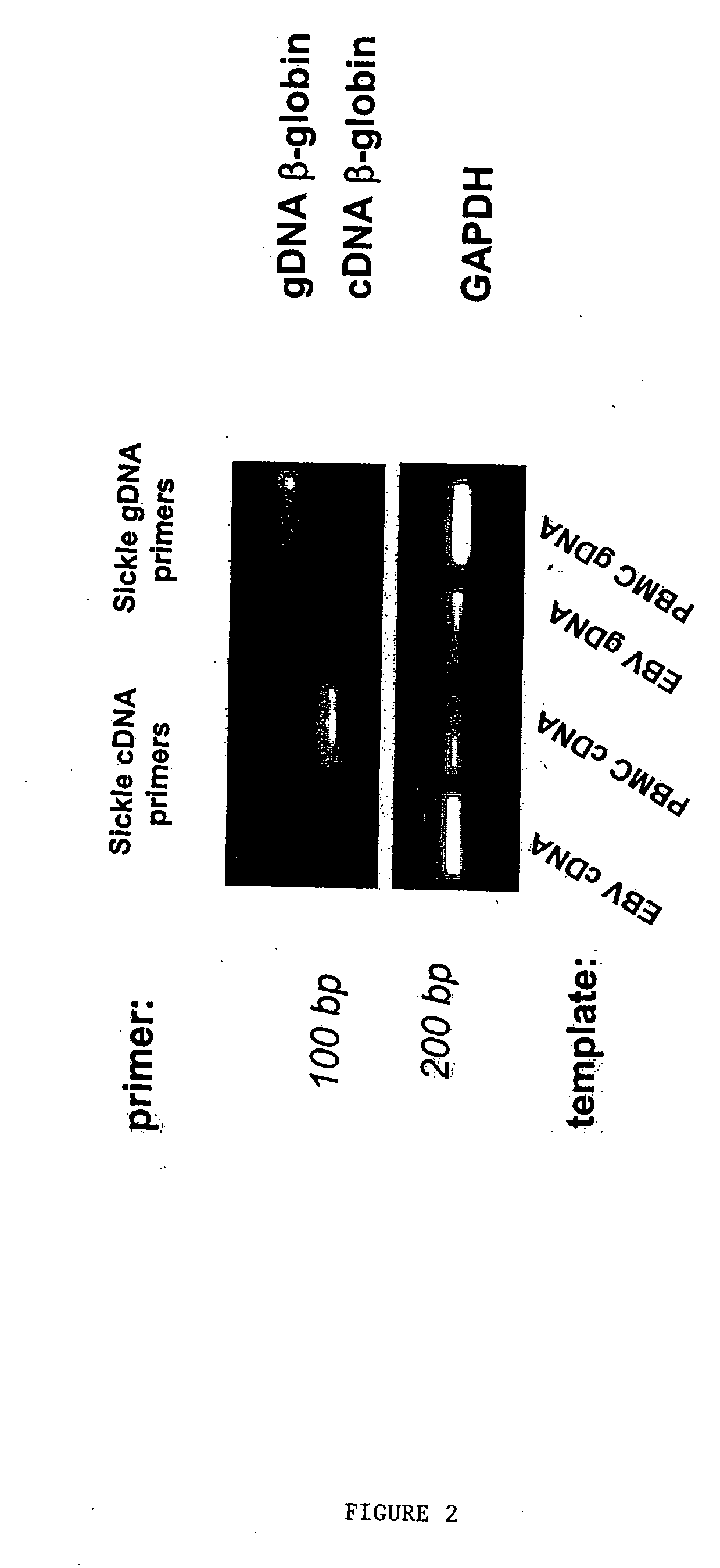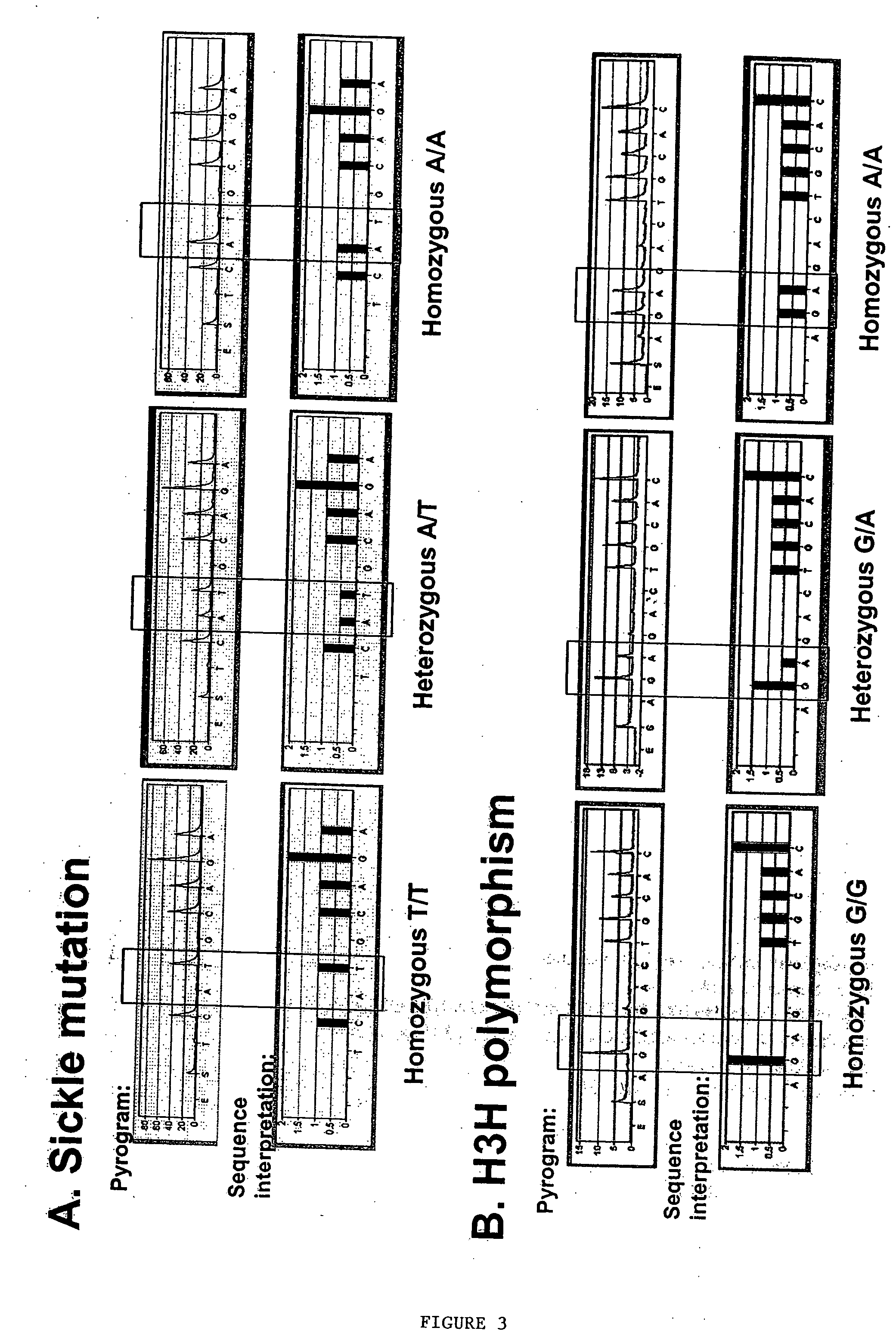Methods to detect lineage-specific cells
a technology detection methods, applied in the field of detection methods of lineage-specific cells, can solve the problems of not providing an assessment of the functional capacity of donated cells, not directly examining the engraftment of specific cell lineages, and samples that are not representative of the original sampl
- Summary
- Abstract
- Description
- Claims
- Application Information
AI Technical Summary
Problems solved by technology
Method used
Image
Examples
example 1
Methods to Quantify Engraftment of Donor Cells in Hematopoietic Cell Lineages Following Stem Cell Transplantation
A. Materials and Methods
Subject Samples and Cell Preparation
[0217] Heparinized blood samples from subjects were obtained prior to and at various times post-transplant, upon enrollment into IRB approved research protocols. Peripheral blood mononuclear cells (PBMC) from normal donors and subjects were isolated by Ficoll / Hypaque density gradient centrifugation, cryopreserved with 10% DMSO and stored in vapor phase liquid nitrogen until the time of analysis.
RNA Extraction and Reverse Transcription
[0218] RNA was extracted from 20×106 PBMC by the single-step acid guanidinium thiocyanate / phenol / chloroform method (Trizol) according to the manufacturer's protocol (Invitrogen, Carlsbad, Calif.). First-strand cDNA was generated from 2 μg of total RNA using random hexanucleofides (Pharmacia LKB Biotechnology Inc., Picscataway, N.J.) and reverse transcriptase (Superscript; GIB...
example 2
Identification of Additional Allel-Specific Polymorphisms to Detect Lineage-Specific Cells
[0240] Additional polymorphisms specific to RBC lineage genes for measurement of RBC chimerism are useful for post-allograft erythroid-lineage specific chimerism and allow the monitoring of any subject-donor pair, regardless of the underlying disease. Some diseases in which knowledge of the extent of donor RBC engraftment would aid in the evaluation of the transplant procedure include MDS, aplastic anemia and thalassemia. Development of a RBC SNP panel for measurement of RBC chimerism also readily allows the evaluation of various clinical factors, such as ABO incompatibility, and the composition and intensity of the conditioning regimen, on RBC engraftment.
[0241] Based on public databases, such as Hembase, available through the National Institute of Diabetes and Digestive and Kidney Diseases (NIDDK), 13 constitutively expressed RBC lineage-specific genes have been identified, including genes ...
example 3
Development of SNP-Based Assays to Monitor Engraftment of Distinct Hematopoietic Cell Types (Myeloid, T cell, B cell, NK Cell, Dendritic Cell) Following Allogeneic HSCT
[0245] To develop novel regimens that prevent delayed graft rejection in subjects with hemoglobinopathies treated with NMSCT, a better understanding of donor-host interactions leading to anti-donor sensitization and immune reconstitution following NMA allo-HSCT is required. Detailed kinetic characterization of host cell recovery and donor cell engraftment in blood and marrow following NMA allo-HSCT in man has been limited. Nevertheless, there have been several reports of preliminary associations between transplant outcome and extent of T cell and / or APC chimerism (Chan, G. W., et al. (2003) Biol Blood Marrow Transplant 9:170; Peggs, K. S., et al. (2004) Blood 103:1548; Koenecke, C., et al. (2003) Exp Hematol 31:911; Keil, F., et al. (2003) Transplantation 76:230; Dey, B. R., et al. (2003) Biol Blood Marrow Transplant...
PUM
| Property | Measurement | Unit |
|---|---|---|
| pH | aaaaa | aaaaa |
| Tm | aaaaa | aaaaa |
| polymorphic | aaaaa | aaaaa |
Abstract
Description
Claims
Application Information
 Login to View More
Login to View More - R&D
- Intellectual Property
- Life Sciences
- Materials
- Tech Scout
- Unparalleled Data Quality
- Higher Quality Content
- 60% Fewer Hallucinations
Browse by: Latest US Patents, China's latest patents, Technical Efficacy Thesaurus, Application Domain, Technology Topic, Popular Technical Reports.
© 2025 PatSnap. All rights reserved.Legal|Privacy policy|Modern Slavery Act Transparency Statement|Sitemap|About US| Contact US: help@patsnap.com



